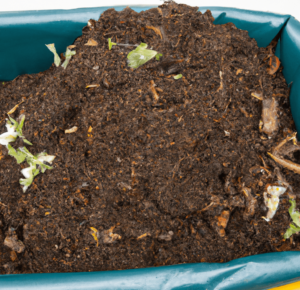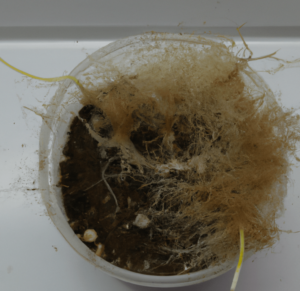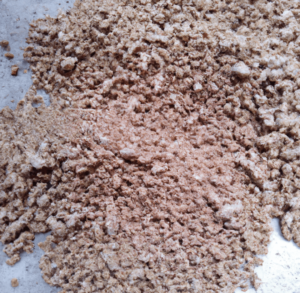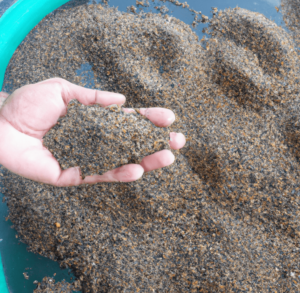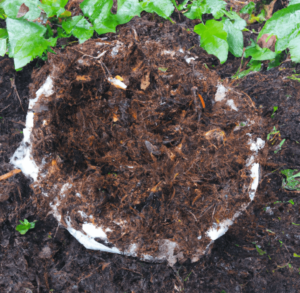The well-being of your plants will determine whether or not your garden is a success. Gardening is a joyful and rewarding activity. It’s crucial to provide your plants with the nutrients they require if you want them to grow robustly and healthily. Using fertilizers is a terrific approach to providing your plants with the vital nutrients they require to thrive. However, you need to know how to properly apply fertilizers to your garden and that’s why we put together this article.
Types of Fertilizers
Fertilizers come in a variety of forms, each with special qualities and advantages. Selecting the best fertilizer for your garden can be made easier by being aware of the various varieties available. Before learning about how to properly apply fertilizers to your garden, here’s some of the most popular types of fertilizers are listed below:
- Vegetable Fertilizer: Vegetable fertilizers are made specifically for vegetables, as the name implies. They include the necessary nutrients for veggies’ growth and high output.
- Liquid Fertilizer: Gardeners who wish to apply fertilizer to their plants fast and simply might consider using liquid fertilizers. They are simple to apply and can be sprayed straight onto plant leaves or soil.
- Seasonal Fertilizer: Some fertilizers are made for particular times of the year. For instance, you might apply a spring-specific fertilizer to assist your plants get off to a strong start and a different fall-specific fertilizer to get them ready for winter.The sort of plants you are growing, the season, and the type of soil in your garden are all significant considerations when selecting the proper fertilizer for your garden. To get the greatest outcomes, pay close attention to the labels and follow the directions.
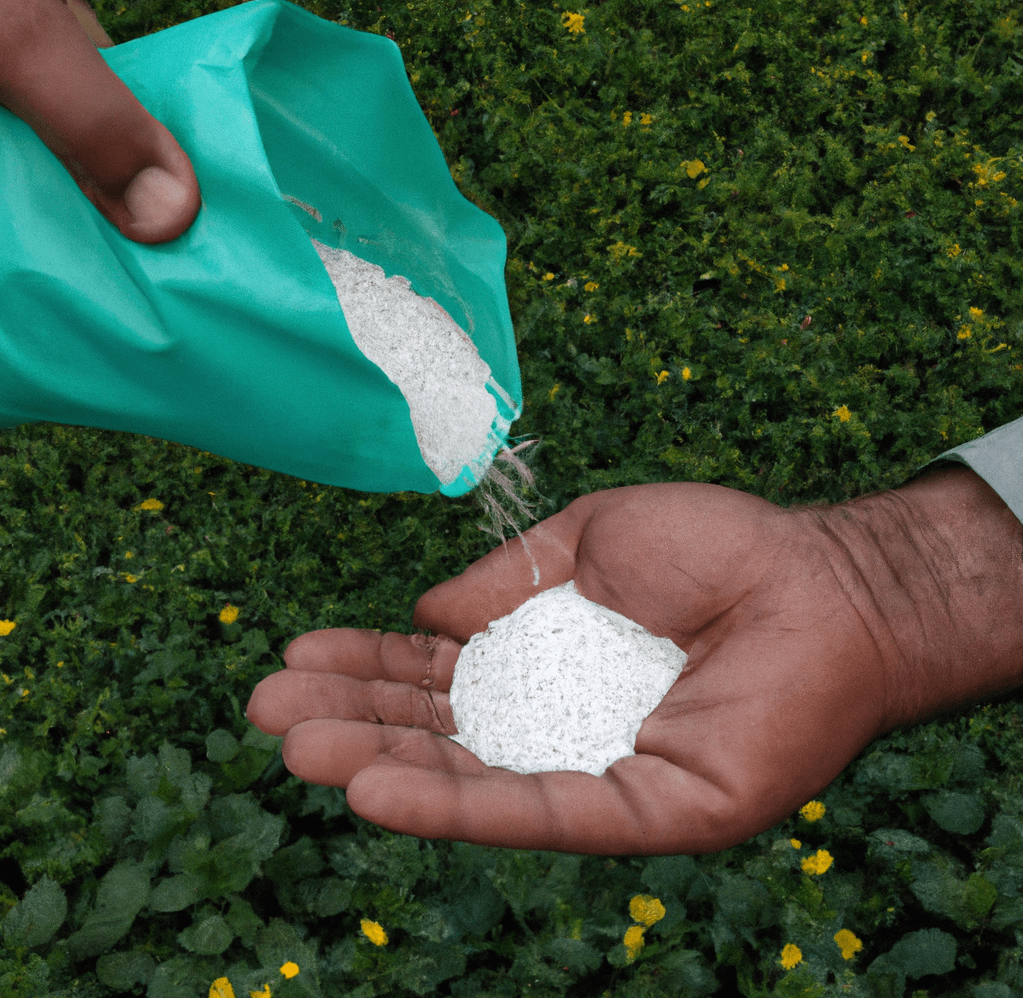
Organic Fertilizers
Before learning about how to properly apply and use fertilizers in your garden, fertilizers come in a variety of forms, including chemical and organic fertilizers. Organic fertilizers come from natural sources, are kind to the environment, and support long-term soil health.
Compost is one of the most widely used types of organic fertilizer. Compost is a rich source of nutrients for plants and is produced by the decomposition of organic materials, such as leaves, grass clippings, and food leftovers because the role of micronutrients in fertilizers is so important. Compost can help the soil retain more water, have a better texture and structure, and encourage the development of beneficial soil organisms.
Fish emulsion, bone meal, and blood meal are examples of animal byproducts that are used to make another type of organic fertilizer. These fertilizers include significant amounts of nitrogen, phosphorus, and other vital nutrients needed for plant growth.
For individuals who desire to engage in sustainable and ecologically friendly gardening, organic fertilizers are a great option. They not only encourage healthy soil and plant growth, but they also contribute to waste reduction by fertilizing plants with waste materials. They are a great option for folks who wish to grow food or flowers in their yards because they are also secure for people, pets, and wildlife.
Synthetic Fertilizers
Many vegetable growers choose synthetic fertilizers as a popular option, but it’s crucial to comprehend what they are and how they function. A specific combination of nutrients is included in synthetic fertilizers, which are created in a lab to satisfy the demands of plants.
They’re a popular option for many gardeners because they are frequently designed to provide plants with an immediate injection of nutrients. Synthetic fertilizers have several disadvantages even though they can be useful for giving plants the nutrients they require. In addition to potentially harming the environment, some synthetic fertilizers can also negatively affect the soil, plants, and other species in your garden.
It’s crucial to learn how to properly apply fertilizers in your garden, carefully following the directions, and sparingly. A surplus of nutrients in the soil caused by the overuse of synthetic fertilizers may be damaging to the plants and other species in your garden. For gardeners searching for a quick and simple approach to supply their plants with the nutrients they require, synthetic fertilizers can be a suitable option. But to maintain the health and well-being of your garden, it’s crucial to be aware of its limitations and utilize them properly.
Slow-Release Fertilizers
As you learn more about how to properly apply fertilizers in your garden, you may think about using slow-release fertilizers. Slow-release fertilizers are a more long-term and sustainable alternative, even though quick-release fertilizers can give plants an immediate boost of nutrients.
Organic materials and nutrients are combined to create slow-release fertilizers, which gradually decompose over time to release the nutrients that plants need to grow. Due to its ability to stop nitrogen depletion, this kind of fertilizer is particularly helpful in vegetable gardens where the soil is frequently handled. This lessens the requirement for frequent treatments while fostering healthy development.
Vegetable gardens can also benefit from the use of organic waste as a slow-release fertilizer, such as compost or well-rotted manure. This kind of fertilizer not only supplies necessary nutrients but also enhances soil structure, which encourages greater root development and general plant health. Vegetable gardens can benefit from slow-release fertilizers by getting the nutrients they need for strong growth. They’re a long-term, sustainable solution that lessens the need for repeated treatments while fostering consistent growth.
Soil Testing
An essential first step in learning how to properly apply fertilizers to your garden is soil testing. You may choose the appropriate fertilizer to give your plants the nutrients they require by evaluating the soil in your garden to identify which nutrients are deficient.
You can learn crucial details about your soil’s pH level, which may impact how readily available nutrients are to plants, via a soil test after learning about the importance of soil pH in fertilization. You can test soil using a variety of techniques, such as utilizing a soil testing kit or sending a sample to a lab for analysis.
Gardeners have the quick and simple option of using a soil testing kit, but it might not be as accurate as a lab test. You can get a more thorough study of the soil, including details about the pH level and the presence of particular nutrients, from a laboratory test.
You can choose the appropriate fertilizer for your plants once you get the results of the soil test. For instance, if the results of the soil test show that the soil is deficient in nitrogen, you could choose a fertilizer with a high nitrogen content to give the plants what they require.
Once you know the results, you must choose the proper fertilizer and apply it correctly while closely adhering to the directions. When applied appropriately, the right fertilizer may give your plants the nutrients they require for optimum growth as well as assist them in developing strong, healthy roots.
How to Test Your Soil
Before you learn how to properly apply fertilizers to your garden, it’s crucial to test your soil to make sure it has the proper balance of nutrients if you want to grow healthy vegetables in your garden.
Using a liquid fertilizer kit, which can be obtained at any gardening supply store, a gardener can quickly test the soil. A container for collecting soil samples and a testing solution are often included in the kit. Gather soil samples from various parts of your garden, combine them, and then add the solution in accordance with the kit’s directions.
The resulting hue will show the pH and nutrient content of the soil. The optimum time to conduct this test is in the spring, before the growing season, so you can make any necessary soil adjustments. You can give your plants the right nutrients and achieve the finest results from your vegetable garden by frequently checking your soil.
Understanding Soil Test Results
Once you receive your soil test findings, it’s critical to comprehend what they imply and how to apply the knowledge to your vegetable garden. A report on a soil test often contains data on the pH of the soil as well as the concentrations of different nutrients, such as nitrogen, phosphorous, and potassium. Other minerals and nutrients that are present in the soil may also be mentioned in the report.
Understanding the appropriate pH range for your plants as well as the ideal amounts of each nutrient is crucial. You should conduct some research and learn the particular requirements of your plants because the appropriate pH range and fertilizer levels may vary based on the sort of plants you are cultivating.
You can choose the appropriate fertilizer for your plants once you get the results of the soil test. For instance, if the results of the soil test show that the soil is deficient in nitrogen, you could choose a fertilizer with a high nitrogen content to give the plants what they require.
Additionally, it’s critical to remember that there are other aspects of gardening to take into account in addition to the results of the soil test. The needs of your plants, for instance, may vary depending on the kind of plants you are growing, the soil type in your garden, and the local environment.
Proper Application Techniques
Now that you know how to properly apply fertilizers to your garden, there are different techniques you need to keep in mind:
- It’s crucial to apply liquid fertilizer directly to the soil, close to the plant roots if you’re using one. This will guarantee prompt nutrient absorption by the plants and stop the fertilizer from evaporating before the plants can benefit from it.
- In order to guarantee that each plant receives an equal amount of nutrients, it is also crucial to apply the fertilizer equally.
- When applying granular fertilizer, it’s crucial to spread it uniformly throughout the soil, being careful to keep the fertilizer away from the plant’s leaves. Either by soaking it in or tilling it in with a garden fork, the fertilizer needs to be integrated into the soil. It’s crucial to use the proper amount of fertilizer and to adhere to the directions on the label.
It’s crucial to be careful and carefully follow the directions when fertilizing your garden because doing so too often might be hazardous to the plants and the environment.
Timing of Fertilizer Application
Applying fertilizer at the right time is crucial for getting the best results in your garden after you learn how to properly apply fertilizers to your garden. The benefits of the fertilizer you are using will be maximized if you fertilize your plants at the appropriate time, ensuring that they receive the nutrients they require when they require them. The sort of plants you are growing, their stage of development, and the fertilizer you are using will all have an impact on when you should apply fertilizer.
Generally speaking, the greatest time to fertilize your plants is while they are actively growing and developing new leaves and stems. For instance, it’s best to fertilize your vegetable plants when they are actively growing and making new leaves and stems. The greatest time to fertilize flowers if you are cultivating them is while they are blossoming because this will help the blooming period last longer.
It’s also crucial to take other gardening tasks, like applying compost and soil preparation, into account while applying fertilizer. To help increase the soil structure and fertility, it is preferable to add fertilizer to your soil after working with compost or other organic materials.
How to Apply Fertilizer to Different Types of Plants
You are aware as a gardener that various plant species require various amounts of fertilizer after learning about how to properly apply fertilizers to your garden. For instance, vegetable plants require more nitrogen-rich fertilizer than floral plants do. Your choice of fertilizer, whether liquid or granular, will also change based on the plants you’re raising.
It’s crucial to carefully read the fertilizer package’s directions and to apply the fertilizer at the appropriate time of year. It’s recommended to fertilize vegetable plants in the spring, right before the growing season starts, then once again in the middle of the growing season. Direct application of liquid fertilizer or dilution and application with a watering can are both options. The soil should be properly covered with granular fertilizer before being watered in.
The optimal times to fertilize flowering plants are in the spring and again in the middle of the summer. Direct application of liquid fertilizer or dilution and application with a watering can are both options. The soil should be properly covered with granular fertilizer before being watered in.
How to Avoid Over-Fertilization
So, you know how to properly apply fertilizers to your garden. Over-fertilizing, however, should be avoided as it can harm both the environment and the health of your plants. It’s crucial to adhere to the directions on the fertilizer package and use the proper amount in order to prevent overfertilization.
You can also test your soil to find out its nutritional content and learn what nutrients your plants require. A smart suggestion is to use a slow-release fertilizer because it releases nutrients gradually over time, lowering the chance of over-fertilization. Because various plants require nutrients at different phases of growth, timing the application of fertilizer is essential.
By adhering to these recommendations, you may promote the growth and well-being of your plants without running the risk of overfertilizing them.
Organic Gardening
Growing plants organically means avoiding the use of artificial pesticides and fertilizers. Instead, gardeners feed their plants with organic matter that is rich in nutrients and comes from natural sources. Gardeners may develop a healthy, sustainable garden that is safer for their families and pets and better for the environment by utilizing organic methods.
The secret to organic gardening is to put your attention on enhancing the condition of the soil and learning how to properly apply fertilizers to your garden. This can be accomplished by regularly adding compost, aged manure, or other organic matter to the soil. These components will improve soil structure and replenish it with the nutrients plants require to develop, making it simpler for roots to access water and nutrients and enhancing soil fertility.
Gardeners can supply plants with the nutrients they require by adding organic matter to the soil as well as using natural fertilizers like compost tea, worm castings, or rock minerals. These organic fertilizers are perfect for gardening because of their gentleness and delayed release.
For vegetable gardens where the product might be consumed by families, organic farming is very crucial. Gardeners may make sure their veggies are safe to consume and free of dangerous pesticides by adopting organic methods. A sustainable and healthy garden can be made with ease by practicing organic gardening. Gardeners can enjoy a wealth of vegetables and flowers without worrying about the effects on their health or the environment by concentrating on increasing soil health and adopting natural techniques to feed plants.
The Benefits of Organic Gardening
After learning how to properly apply fertilizers to your garden, you may be convinced to try out organic gardening. This strategy has many advantages, including better soil health, stronger roots, and more nutrient-dense crops.
- The improvement in soil health is one of organic gardening’s main advantages. The soil is improved with the nutrients that plants need to develop by adding organic matter such as compost, aged manure, and other natural sources of fertilizer. Stronger, more robust plants are produced as a result of a healthier soil structure that is simpler for roots to penetrate.
- The enhanced nutrient content of crops is another advantage of organic gardening. The nutrient density of plants grown in organically rich soil is frequently higher than that of plants grown in soil that has been fertilized artificially. This is so that plants may gradually absorb a consistent supply of nutrients, resulting in more tasty and nutrient-dense produce. This is made possible by the slow-release nature of natural fertilizers.
- Reduced environmental exposure to synthetic chemicals is another benefit of organic agriculture. In addition to potentially harming the environment and wildlife, synthetic pesticides and fertilizers can contaminate groundwater. Gardeners can steer clear of these potential risks and contribute to environmental protection by employing natural ways.
- Organic farming may end up being more affordable over time. Although acquiring organic matter and natural fertilizers may require a larger initial investment than buying synthetic fertilizers, the long-term advantages in terms of crop production and soil health make it a wise investment for any gardener
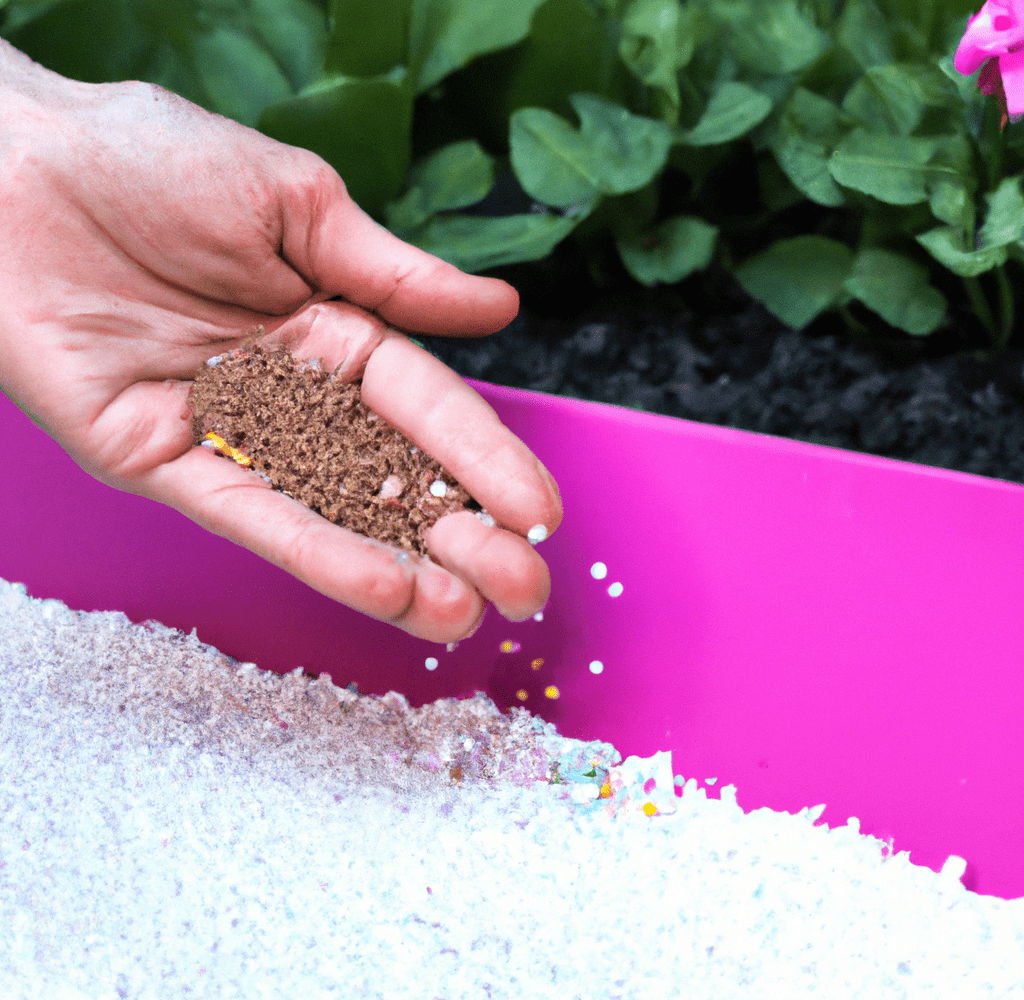
Organic Fertilizer Options
For individuals who want to encourage healthy, environmentally friendly gardening techniques, organic fertilizers are a fantastic substitute for synthetic fertilizers. The nutrients that plants require to develop and thrive are provided by organic fertilizers, which are made from natural sources like plant or animal waste.
After learning about, how to properly apply fertilizers to your garden you may want to use compost which contains a variety of vital nutrients and enhances soil fertility and structure. Other organic fertilizer choices include fish emulsion, bone meal, and blood meal, each of which provides certain plant nutrients.
Given that they are free of chemicals and toxic materials, organic fertilizers are a more environmentally responsible and sustainable approach to fertilizing plants, particularly those that are used to generate food. To ensure optimal development and health, it’s crucial to pick the proper organic fertilizer for your plants and adhere to the label’s directions.
How to Make Your Own Organic Fertilizers
Organic fertilizers are widely accessible in the marketplace, but they can also be made at home after you learn how to properly apply fertilizers to your garden. Here are some instructions on how to create your own organic fertilizers for your floral and vegetable plants:
- Compost Tea: By brewing compost with water, compost tea is a type of liquid fertilizer. Simply add a shovelful of compost to a large bucket of water and stir to produce compost tea. Stirring occasionally, allow the mixture to soak for a few days, then filter and use the liquid to water your plants.
- Worm Castings: By maintaining a worm bin, it is simple to produce worm castings, which are a great source of nutrients for plants. Simple kitchen scraps and yard trash will suffice to feed your worms, who will then generate castings that are rich in nutrients and may be utilized as fertilizer.
- Banana peels: Rich in potassium, banana peels can be used as a fertilizer for your plants. The peels need just be chopped up and buried in the ground close to the base of your plants. Over time, the peels will decompose and release their nutrients into the soil.
- Eggshells: Eggshells are a fantastic calcium source and can be used to improve the condition of the soil. Eggshells can be crushed, then scattered on the soil surrounding your plants. Over time, the shells will disintegrate and add calcium to the soil.
There are numerous other simple techniques to create your own organic fertilizers in addition to these. So use your imagination and try out a few different approaches to discover which one suits your landscape the best!
Bottom Line: How to Properly Apply Fertilizers to Your Garden
You can encourage your plants to flourish by being aware of their needs, the sort of fertilizer you use, and the best time to apply it. To make sure you are giving your plants the correct nutrients, it’s crucial to learn about, how to properly apply fertilizers to your garden, to choose the right fertilizer, whether it be synthetic or organic, and follow the directions on the label.
FAQs on How to Properly Apply Fertilizers to Your Garden
Why is it crucial to fertilize your garden correctly?
For them to grow and stay healthy, your plants must have access to the right nutrients. The best way to make sure your plants get the nutrients they require to thrive is by using fertilizers.
What are the various fertilizer types that are available?
Vegetable fertilizers, liquid fertilizers, seasonal fertilizers, organic fertilizers, synthetic fertilizers, and slow-release fertilizers are just a few of the several types of fertilizers available. Your choice of fertilizer should be influenced by the plants you are growing, the time of year, and the soil in your garden.
Organic fertilizers: what are they?
Natural materials are used to create organic fertilizers, which are good for the environment. They are created by the breakdown of organic materials like leaves, grass clippings, and food scraps and sustain long-term soil health. Organic fertilizers include compost and animal wastes like fish emulsion, bone meal, and blood meal.
What exactly are man-made fertilizers?
A specific mix of nutrients is included in synthetic fertilizers, which are created in a lab to satisfy the demands of plants. They give plants a quick boost of nutrients, but they could damage the soil and the ecosystem, which would be bad for the plants and other species in your garden.
What are fertilizers with a gradual release?
A long-term and sustainable replacement for quick-release fertilizers is slow-release fertilizers. They are created by mixing fertilizers with organic materials, which progressively break down over time to release the nutrients required for plant growth. They are especially useful in vegetable gardens since they lessen the need for repeated treatments and encourage healthy growth.
What exactly is a soil test?
To properly apply fertilizer to your garden, soil testing is a crucial first step. It assists you in selecting the proper fertilizer for your soil and guarantees that you are giving your plants the nutrients they require.
What should a gardener know before fertilizing various plant species?
It’s critical for gardeners to comprehend that various plant types demand various dosages of fertilizer. Vegetable plants, for instance, require more nitrogen-rich fertilizer than floral plants do. Depending on the plants being raised, the type of fertilizer (liquid or granular) and the timing of treatment may also change. Applying fertilizer at the correct time of year and adhering to the instructions on the fertilizer box is essential. Before the growing season begins in the spring and again in the middle of it, fertilizer should be applied to vegetable plants. In the spring and in the middle of the summer, fertilizer should be applied to flowering plants.
What can a gardener do to prevent overfertilizing his or her plants?
It’s crucial to use the recommended dosage of fertilizer and to adhere to the instructions on the fertilizer box to avoid overfertilizing plants. You can test your soil to find out what nutrients it contains and what your plants need. As nutrients are released gradually over time, using a slow-release fertilizer can help lessen the danger of over-fertilization. Timing the fertilizer application is crucial since various plants need different nutrients at different growth stages.
What exactly is organic farming?
Growing plants organically means avoiding the use of synthetic fertilizers and pesticides. Organic matter that comes from natural sources and is rich in nutrients is fed to plants by gardeners. Gardeners can develop a healthy, sustainable garden that is better for their families, pets, and the environment by enhancing soil health and employing natural techniques to feed plants.
What advantages does organic gardening offer?
Among the many advantages of organic gardening are better soil health, stronger roots, and more nutrient-dense produce. Stronger, more resilient plants arise from adding organic matter to the soil, such as compost, old manure, and other natural forms of fertilizer. Additionally, organic farming lessens exposure to synthetic chemicals and may eventually result in financial savings.


